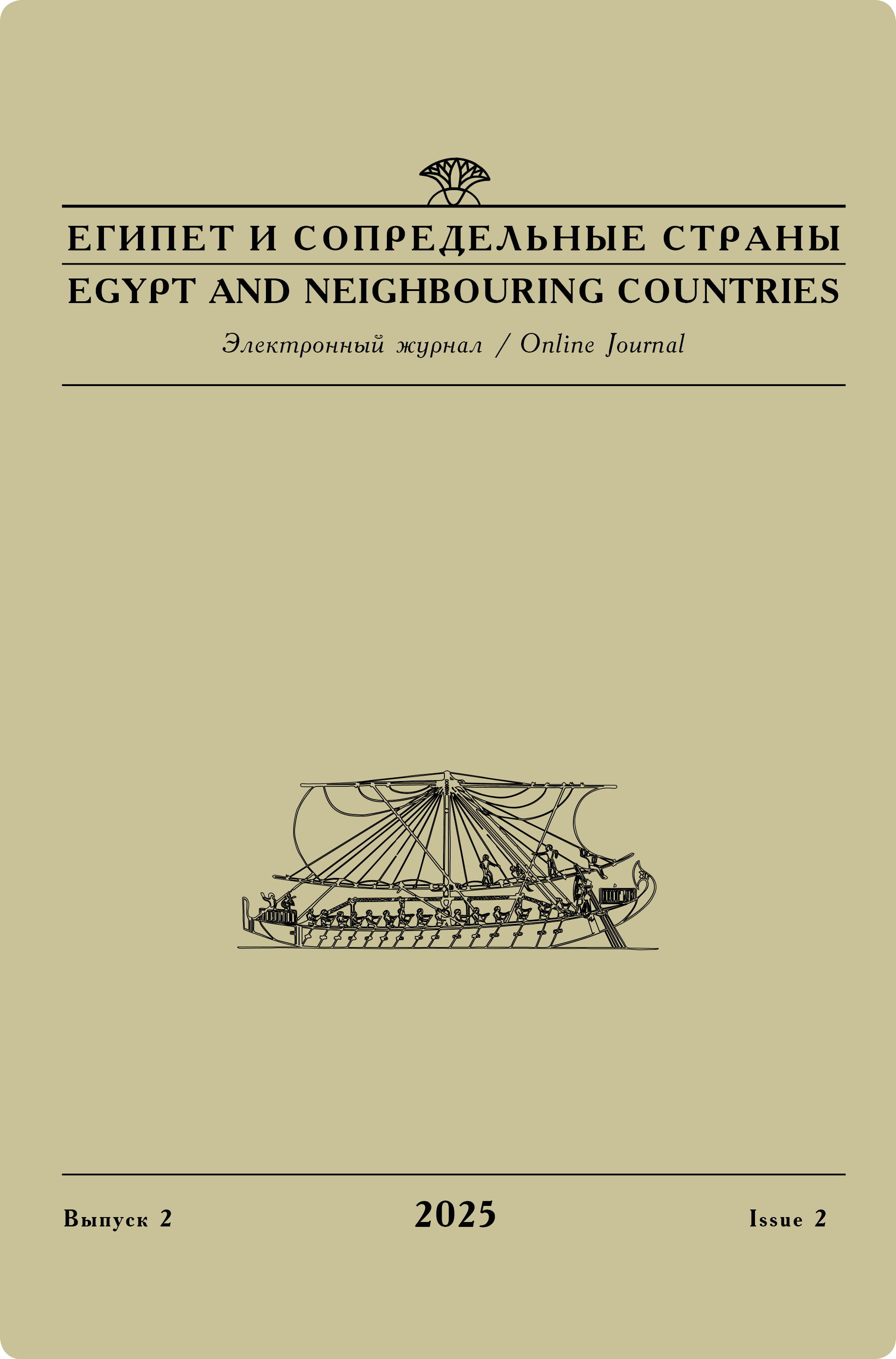Issue 2, 2020
A. O. Kitova
Transnazal'naia kraniotomiia v praktike izvlecheniia golovnogo mozga (osobennosti drevneegipetskoi mumifikatsii po materialam iz grobnitsy TT 23 v Luksore) [Transnasal craniotonomy in brain removal procedures (some pecularities of Ancient Egyptian mummification based on material from the Theban Tomb 23)]
Artificial mummification of dead bodies was a core part of the Ancient Egyptian funerary rite. As early as in the Old Kingdom, one of obligatory mummification stages was removal of the brain. Through a nostril a hole was made in the cribriform plate so the instrument could be inserted into the cranial cavity. Such access to the cranial cavity and brain structures is usually called the transnasal craniotomy. In this paper a number of peculiarities and variants of the brain removal procedures that were in use on the Theban necropolis are discussed. The sculls found during archaeological excavations in TT 23 by the Centre for Egyptological Studies of the Russian Academy of Sciences are examined from this point of view. The data is compared to published results of studying other collections and archaeological sites. In future, results obtained during the work with materials from TT 23 will be able to be used for investigation into peculiarities of the Theban necropolis functioning in different historical periods.
Keywords:
Theban necropolis, tomb of Tjay, TT 23, mummification, transnasal craniotomy.
Original language — Russian.
DOI: 10.24412/2686-9276-2020-2-3959.
Referring: Kitova A. O. Transnasal craniotonomy in brain removal procedures (some pecularities of Ancient Egyptian mummification based on material from the Theban Tomb 23) [in Russian] // Egypt and neighbouring countries 2 (2020): 39–59. DOI: 10.24412/2686-9276-2020-2-3959.
Read full article




